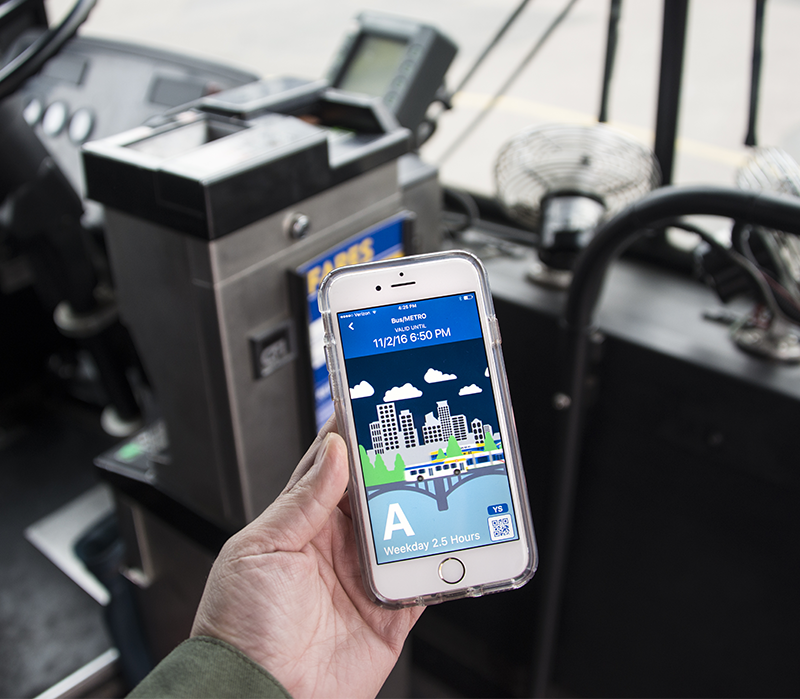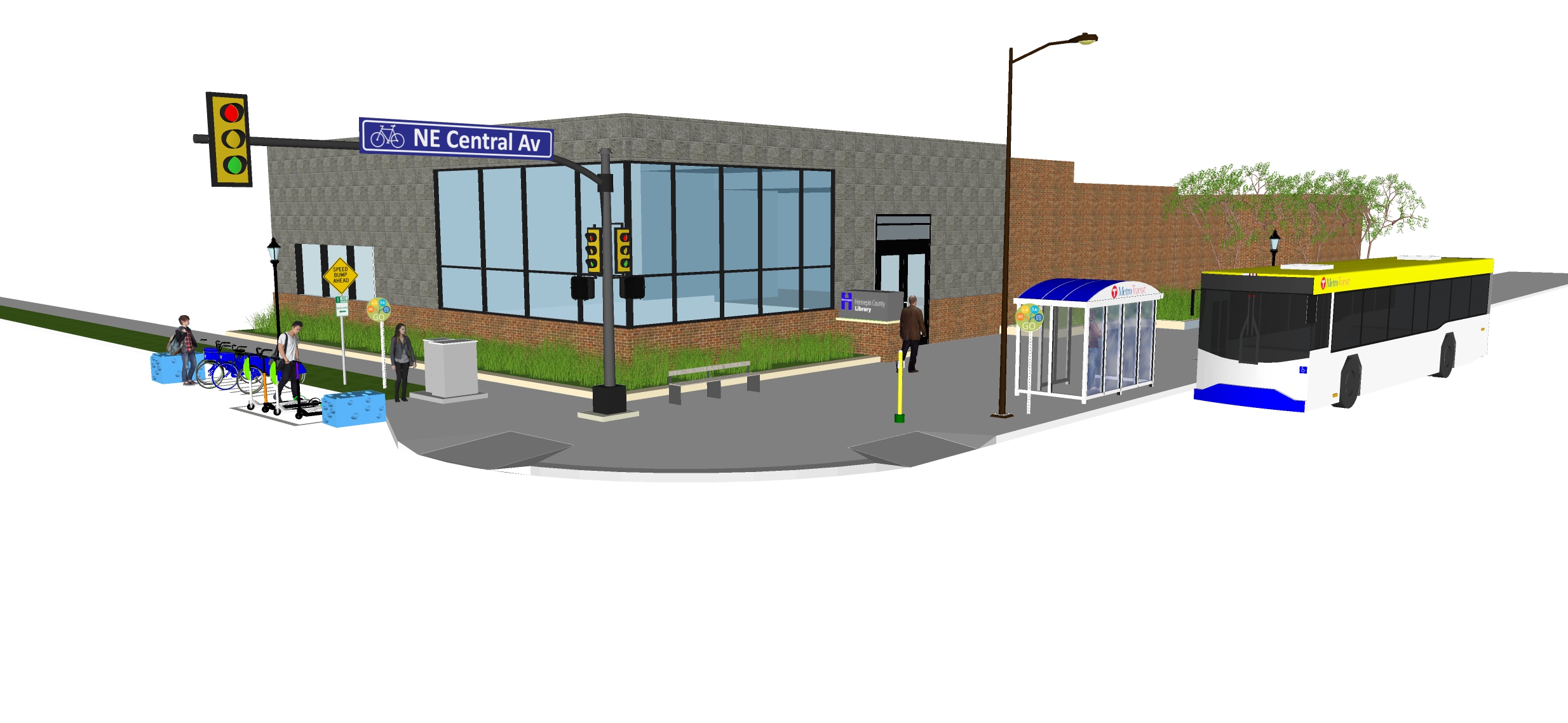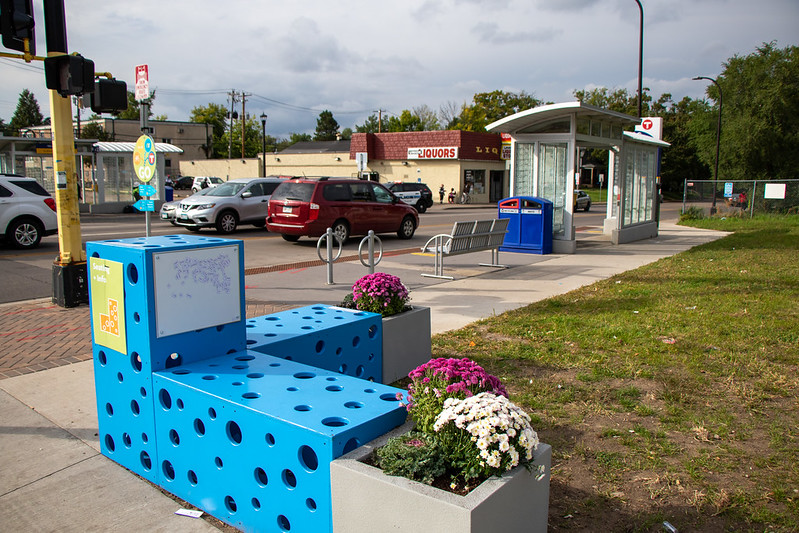Strategy 3 Formulate public-private partnerships to implement innovative, ambitious and scalable pilots.
The actions within this strategy are divided into two categories:
Action we will DOActions we will SUPPORTAction we will do are followed by “DO” and are colored in dark gray, and actions we will support are followed by “SUPPORT” and are colored in light gray.
Learn more about how we get thereTechnology innovations in transportation are primarily being developed and deployed by the private sector; public agencies have the role of regulating and permitting their use on city streets as right of way managers. The partnerships with both the private sector and other public agencies are critical to our ability to deploy safe and successful pilots. All pilots are selected to help determine permanent advanced mobility implementations.
Mobility as a Service, the concept of a multimodal trip planning and payment as a subscription service through one virtual platform, presents a partnership opportunity. Working with regional partners such as Metro Transit, as well as private service and application providers, to enable the deployment of Mobility as a Service will help people take into account environmental, personal health, financial, and time considerations when trip planning. Our approach allows for compatibility with mobility providers and utilizes open data to allow for multiple private platforms.
Financial incentives can change how people travel. This can benefit their health and the envrionment.
Another key opportunity for partnering regionally is to pilot and deploy mobility hubs. Mobility hubs are physical places where people can connect to multiple modes of transportation to make their trip as safe, convenient, and reliable as possible. Most hubs are centered on transit connections, where multiple modes are available to extend the reach of transit. Bicycle and micromobility parking, car share vehicles, and wayfinding and real time information are all potential components of mobility hubs.
Actions to formulate public-private partnerships to implement innovative, ambitious and scalable pilots.
Technology 3.1
Implement a network of mobility hubs in partnership with Metro Transit. Mobility hubs will be designed to connect transit with other shared mobility services such as bikeshare, scooter share and carshare. Mobility hubs will vary in scale based on context, space and viability and may have placemaking, vehicle charging and wayfinding features.
Mobility hubs are places where people can connect to multiple modes of transportation to make their trip as safe, convenient and reliable as possible.
Supported goals:
Mobility Active Partnerships
Related actions:
Walking 8.1, Transit 5.1, Transit 5.2
Difficulty:
High
Timeframe:
2020-2023 (Years 0-3)
Technology 3.2
Work with public and private partners and community-based organizations to evaluate future mobility hub locations and ensure that the geographic placement of mobility hubs prioritizes locations in ACP50 areas.
Supported goals:
Equity Mobility Active Partnerships
Related actions:
Difficulty:
Medium
Timeframe:
2020-2023 (Years 0-3)
Technology 3.3
Collaborate with public and private partners to enable a virtual platform for accessing and paying for transit and shared mobility services, including a multimodal subscription package
Supported goals:
Equity Prosperity Mobility Active Partnerships
Related actions:
Transit 5.1, Transit 5.2
Difficulty:
High
Timeframe:
2024-2027 (Years 4-7)
Technology 3.4
Work with the Metropolitan Council and Metro Transit to expand app-based vanpool and carpool.
Supported goals:
Climate Prosperity Mobility Active Partnerships
Related actions:
Operations 4.1, Operations 4.2, Operations 4.3, Operations 4.4
Difficulty:
Medium
Timeframe:
2024-2027 (Years 4-7)
Technology 3.5
Work with the Metropolitan Council and Metro Transit to pilot a microtransit service within Minneapolis and the greater Twin Cities region.
Supported goals:
Equity Mobility Active Partnerships
Related actions:
Operations 4.1, Operations 4.2, Operations 4.3, Operations 4.4
Difficulty:
Medium
Timeframe:
2028-2030 (Years 8-10)
See also actions:
- Transit 5.2
On demand mobility services - Transit 7.3
Transit


